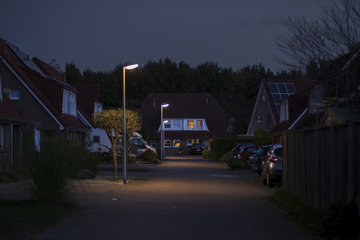A status symbol to die for
Three rhinoceroses are killed in South Africa each day, their horns chopped off and sold illegally on international markets.
Kruger National Park and other public and private game reserves have become battlefields where state security forces and game wardens fight for the rhinos’ survival. Despite their efforts, conservative estimates give rhinos another seven years before they go extinct in the wild. Annette Hübschle is carrying out research into why the protection of rhinos is failing.

Annette Hübschle/Transcript: Ralf Grötker
My local roots – I grew up in Namibia – and professional networks that I groomed over a decade while working as a researcher on organized crime issues for a South African research institute proved extremely valuable for the purposes of data collection. During twelve months of fieldwork in southern Africa and Southeast Asia, I conducted more than 420 ethnographic interviews and focus groups. Among those interviewed were poachers and their bosses – so– called kingpins, most of whom come from Mozambique – convicted rhino poachers in South African jails, rogue wildlife professionals, rhino farmers, prosecutors and game wardens, community members living in Mozambican villages bordering Kruger National Park, representatives of conservation NGOs, and activists, traders, smugglers and Asian consumers. The large sample size and the use of other qualitative data such as police charge sheets and court files enabled data triangulation and verification. This is particularly im- portant when studying illegal markets.
My goal was to understand and record the market in its entirety, from the “production” of horn – poaching, hunting or theft – to the international trade and consumption of rhinoceros horn. In light of the obstacles presented by the illegal and transnational nature of the market, the question arises as to how the various market participants achieve social order and how they re-solve the coordination problems of co- operation, competition and valuation.
One principal finding is that important actors along the value chain simply don’t accept the ban on the trade of rhino horn. I call this mechanism “contested illegality”, and it serves as a strategy to legitimize illegal economic activities. It starts with the poachers who are individuals that have lost their ancestral lands and the associated hunting rights as a result either of colonial expropriation or of the establishment of protected areas and transfrontier conservation parks.
Unsurprisingly, they don’t accept the land tenure system or the trade ban imposed by the Washington Convention on the International Trade in Endangered Species (CITES) of 1973, which came into force under the old apartheid regime. However, some poachers are merely the foot soldiers for professional big game hunters and farmers, most of them white Afrikaners, who have their own personal networks and sell rhino horn as far away as Asia.
Many of them own game reserves or farms, while others are vets or helicopter pilots. These actors claim the moral high ground and believe that the trade ban lacks legitimacy and relevance to the African case. They share the belief that the rhinoceros can be effectively protected only if private rhino owners are provided with economic incentives to breed rhinos, such as trophy hunting and the sale of rhino horn. According to this narrative, both the private sector and the state would obtain the nec- essary funding for environmental pro- tection and conservation through legalization of the trade.
However, this approach hasn’t shown the desired effects – the domestic trade in rhino horn was permitted in South Africa until 2009 – and this led to an interface between legal and illegal economic activities – a gray channel of sorts. The prominent involvement of state officials in corrupt activities shouldn’t be discounted, either, with such corrupt activities ranging from CITES permit fraud to active participation of police officers and game wardens in poaching groups.
Among end consumers, the illegal nature of the trade would appear to be of little or no concern. Rhinoceros horn is one of the most expensive commodities in the world, with a kilogram costing more than EUR 50,000. The horn was frequently used in powder form as a medicine in traditional Asian pharmacopoeia, but it is also popular as a status symbol, a gift to consolidate business relationships, or an invest- ment commodity. In fact, anyone who buys horn as an investment tool is counting on the extinction of the wild animal.
Many of the political measures taken to date have, in my view, served only to make the problem worse. The securitization of the fight against rhino poaching and the permission for game wardens to resort to the use of firearms (should there be an immediate threat to their lives) has led to the deaths of around fifty rhino poachers in the past year in Kruger National Park alone. These deaths have further alienated communities living next to parks, as they perceive the lives of wild animals to be valued more highly than those of their fallen community members.
Social injustice and the colonial legacy further encourage the locals to turn to poaching, which at least offers the opportunity for social mobility, a chance at socio-economic upliftment. Some poachers have started to form their own poaching groups and sell the horns themselves to intermediaries or Asian buyers. For villagers living next to Kruger National Park, there are few other avenues for income generation. As the park continues to expand to include conservation areas in neighbouring Mozambique and Zimbabwe, more villagers have been resettled from their ancestral grounds in recent months. I think the time has come to consider the use of social impact bonds – structural aid and direct investment in land rights, schools and hospitals as a reward for village communities that support the fight against poaching.












